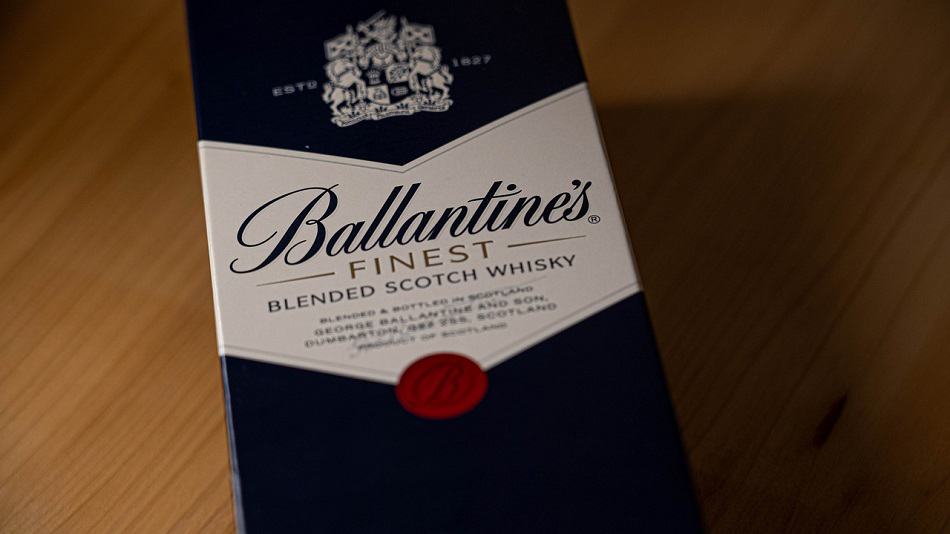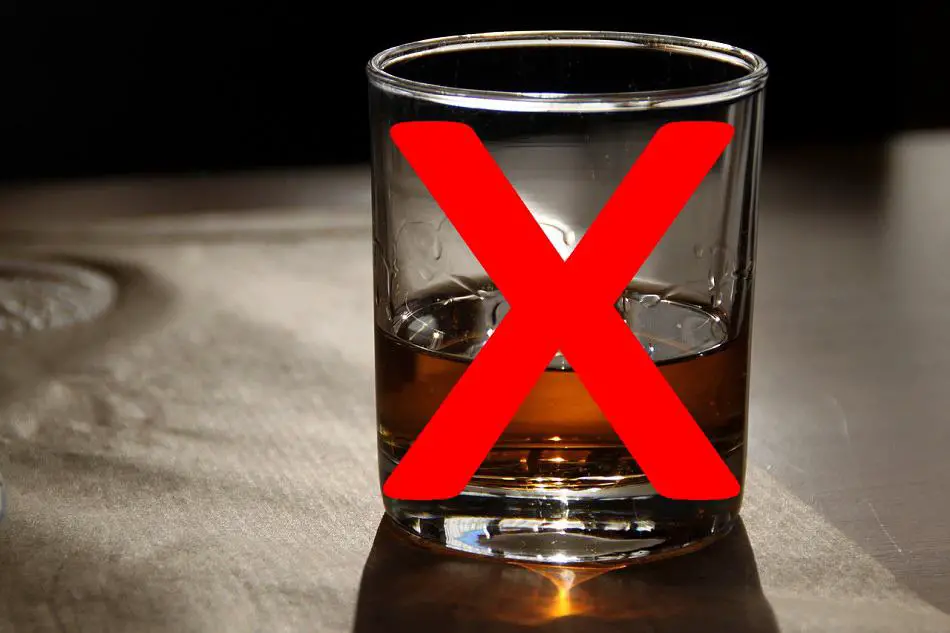Whiskey bottles often come in quite substantial packaging so it’s only natural to wonder whether this is just for aesthetic reasons or a hint by the makers that the whiskey should be kept in the box it comes in. Here’s the answer:
There’s no need to keep whiskey in the box it comes in as that won’t prevent your whiskey from going bad or protect it from the things that can damage it. It can, however, be a nice way to display your whiskeys and helpful if you need to travel with them. The only time you do need to keep whiskey in the box it comes in, is if you’re collecting it as an investment.
The rest of this article will explain why keeping whiskey in the box it comes in doesn’t give it any protection and where you should keep your whiskey instead that will. We’ll also look at some advantages of keeping your whiskey in the box it comes in anyway and why you need to do so if you’re collecting it as an investment.

Why There’s No Need to Keep Whiskey in the Box It Comes In
As mentioned, there’s no need to keep whiskey in the box it comes in because doing sodoesn’t prevent your whiskey from going bad or protect it from the things that can damage it. Your whiskey won’t suddenly go bad if you don’t store it in the box it comes in and it won’t be safe and secure if you do. Here’s why:
Whiskey, unlikeother food and drink, is very strong which means it can last indefinitely and is highly unlikely to ever go bad.
There are two reasons for this. The first is because whiskey gets its flavor from the cask in which it’s matured, so unlike wine, once it’s bottled it can’t continue to age and eventually deteriorate. The second reason is because the high alcohol content (between 40%ABV – 68%ABV) freezes the esters, congeners and volatile alcohols in a type of suspended animation, which also prevents the deterioration of your whiskey.
This means that you don’t need to do anything to prevent your whiskey from going bad and that the box your whiskey comes in is not some sort of means of preservation.
When it comes to damage, however, things are not quite as simple. Although whiskey is still very strong and not easily affected, there are three things that can damage it:
- Direct light and direct sunlight
- Heat and fluctuating temperatures
- Oxygen
1. Direct Light and Direct Sunlight
Direct sunlight will bleach out the color pigments of your whiskey over time causing it to lose its beautiful golden (or similar) color.
Direct light and direct sunlight produce chemical reactions in the volatile compounds of whiskey causing them to break down. A mere month or two of this will cause the flavor of your whiskey to degrade, and it will taste much harsher, possibly even of rubber, paint thinner or rotten fruit.
2. Heat and Fluctuating Temperatures
Heat and fluctuating temperatures will also damage your whiskey because they allow oxygen (the third thing that damages whiskey) to get into the bottle.
If whiskey is exposed to heat it will expand, eventually coming into contact with the cork that’s sealing the bottle. This is a problem because, as mentioned, whiskey has a very high level of alcohol which can easily damage a wooden cork. The more the cork is in contact with high levels of alcohol the more it will decay and disintegrate.
And a damaged cork means a looser seal and a loser seal means oxygen seeping into the bottle. And the more the cork is damaged the loser the seal will be and the greater the amount of oxygen that can get into the bottle.
The same is true if there are a lot of temperature fluctuations. With every fluctuation, oxygen can seep into the bottle.
3. Oxygen
Oxygen readily binds with lots of chemical compounds turning them into other compounds in a process called oxidation. When you add oxygen to whiskey new compounds are created and its flavor will be drastically altered.
How the flavors of your whiskey will change can’t be predicted. It could very well make your whiskey taste better, but it could also make your whiskey taste worse. Certainly, it will make your whiskey taste different, which is significant damage if you’ve bought a particular whiskey for its particular flavors at its particularly high price.

So while you don’t need to do anything to prevent your whiskey from going bad you do need to do something to protect your whiskey from the three things that can damage it. However, once you know what they are, it becomes quite obvious that the box your whiskey comes in won’t do that. It won’t keep the whiskey at a cool and stable temperature, and it won’t seal the bottle against oxygen.
The box can shield your whiskey from direct light and direct sunlight, but the question is how well. It will depend on how the box is made and the power of the light in the place you’re keeping your whiskey.
Since the box won’t protect your whiskey from two of the things that can damage it and there’s no guarantee that it will fully protect your whiskey from the third, it’s clear that there’s no reason to keep your whiskey in the box it comes in.
How You Should Keep Your Whiskey
Since keeping whiskey in the box it comes in will not protect it from the things that can damage it, it’s important to know where you should keep your whiskey instead that will:
Away from Direct Light and Direct Sunlight
Store your whiskey somewhere where it’s not exposed to direct light or direct sunlight. You can store your whiskey in a cellar (see next point) or an opaque cabinet.
In a Cool and Stable Temperature
Keep your whiskey in a cool, temperature-controlled room at 15°-20°C or 59°-68°F.
Cellars, that are dark with only a minimum amount of sunlight and heat, and a room temperature of 15°-18°C or 59°-64°F are perfect for storing whiskey. For those of us who don’t have a cellar, make sure that your whiskey storage conditions are as close to that of a cellar as possible. This means cool, with no direct light and as few temperature fluctuations as possible.
Upright
This is to prevent the cork from coming into too much contact with the whiskey’s high levels of alcohol, so that it doesn’t become damaged, let in oxygen and allow the flavors of your whiskey to be permanently altered.
On the other hand, keeping corks completely dry for long periods of time will also cause them to chip, crumble and become damaged, let in oxygen, and allow the flavors of your whiskey to be permanently altered.
So even though your whiskey must be stored standing up it must also be turned over every so often. Some rest their bottles horizontally for an hour or so once or twice a year. Others turn their bottles upside down for a few seconds once a month. This way the alcohol won’t damage the cork and the cork won’t dry out.
Advantages & Disadvantages of Keeping Whiskey in the Box
Although, as explained, it’s not necessary to keep whiskey in the box it comes in, there are some advantages in doing so anyway.
The first is that the boxes can be a great way to display your whiskeys, especially if they have a very beautiful or unique design. Of course, many whiskey bottles have beautiful or unique designs too, in which case the opposite will be true.
Another reason to keep your whiskeys in their boxes is that it makes it easier if you ever need to move your whiskeys or travel with them. Being in boxes, they are much easier to pack for transport and carry, reducing the chances of them smashing on the way.
On the other hand, there’s one big disadvantage of keeping your whiskeys in the boxes they come in: more work every time you want to pour yourself a glass of whiskey.
When You Do Need to Keep Whiskey in the Box It Comes In
There’s one time you do need to keep whiskey in the box it comes in and that’s if you’re collecting it as an investment.
Obviously, it’s the whiskey itself that gives your investment its value but as with many collectors’ items, the box and packaging can add to it and a lack of box and packaging can detract from it, so keeping it in its box is important when collecting whiskey as an investment.
